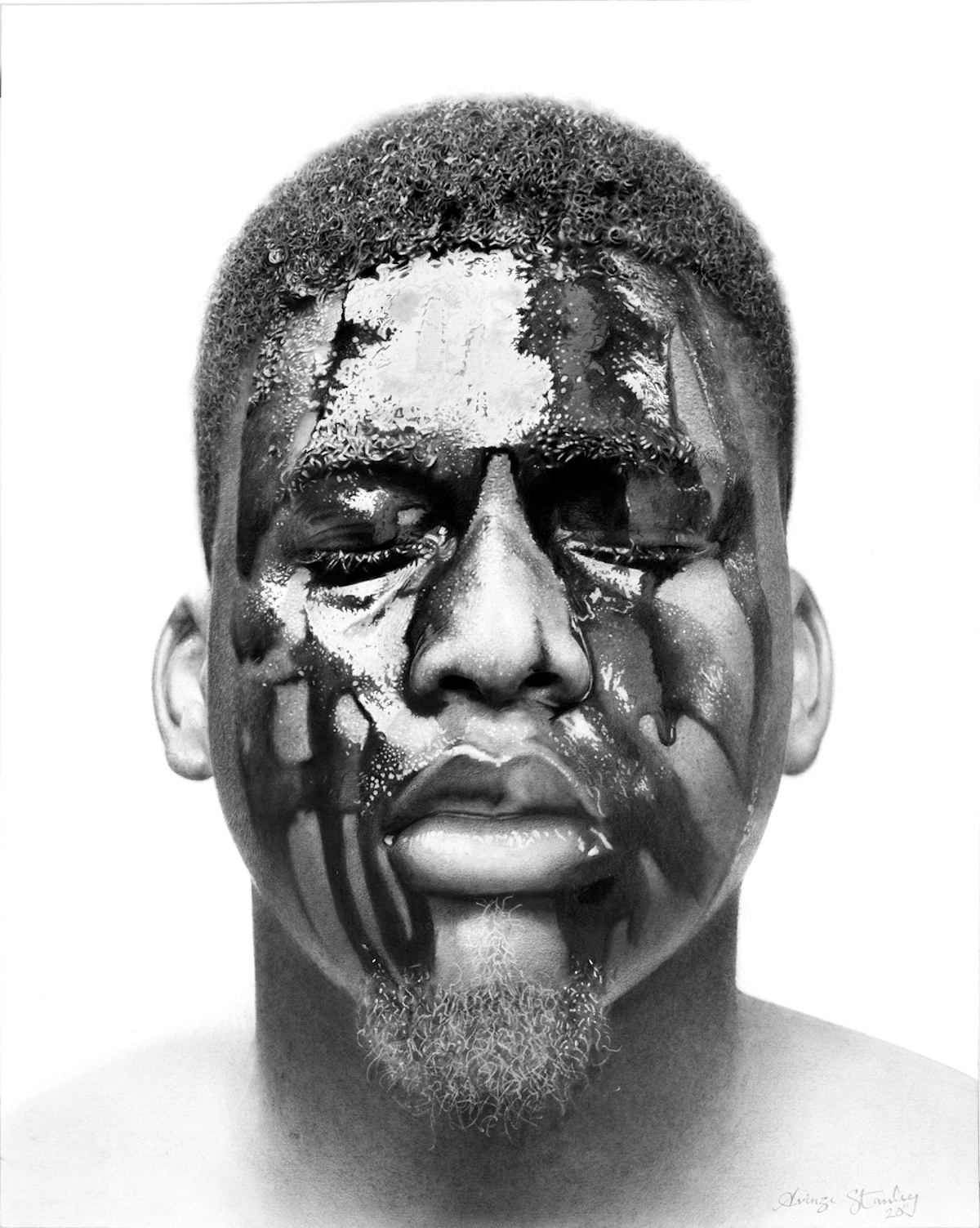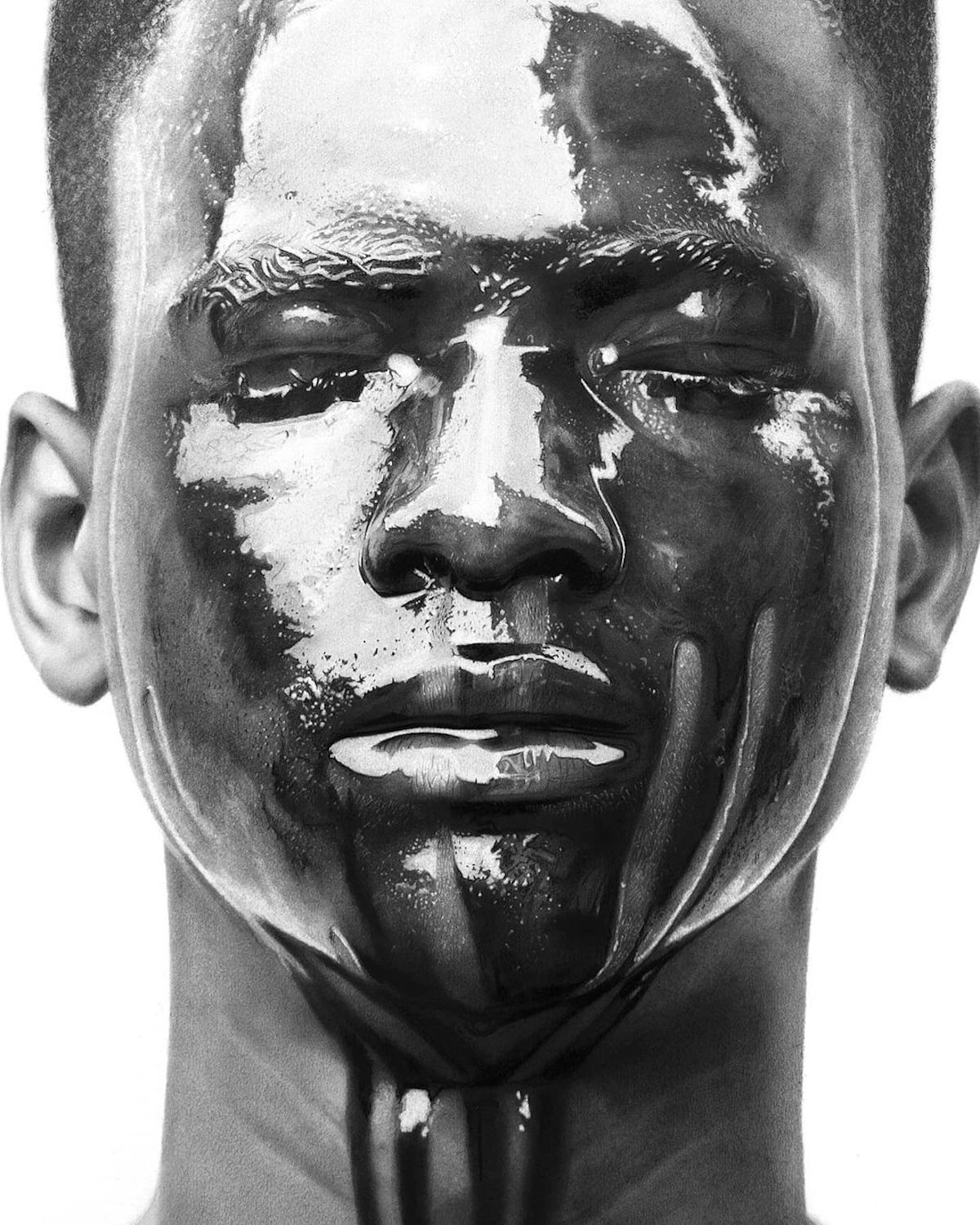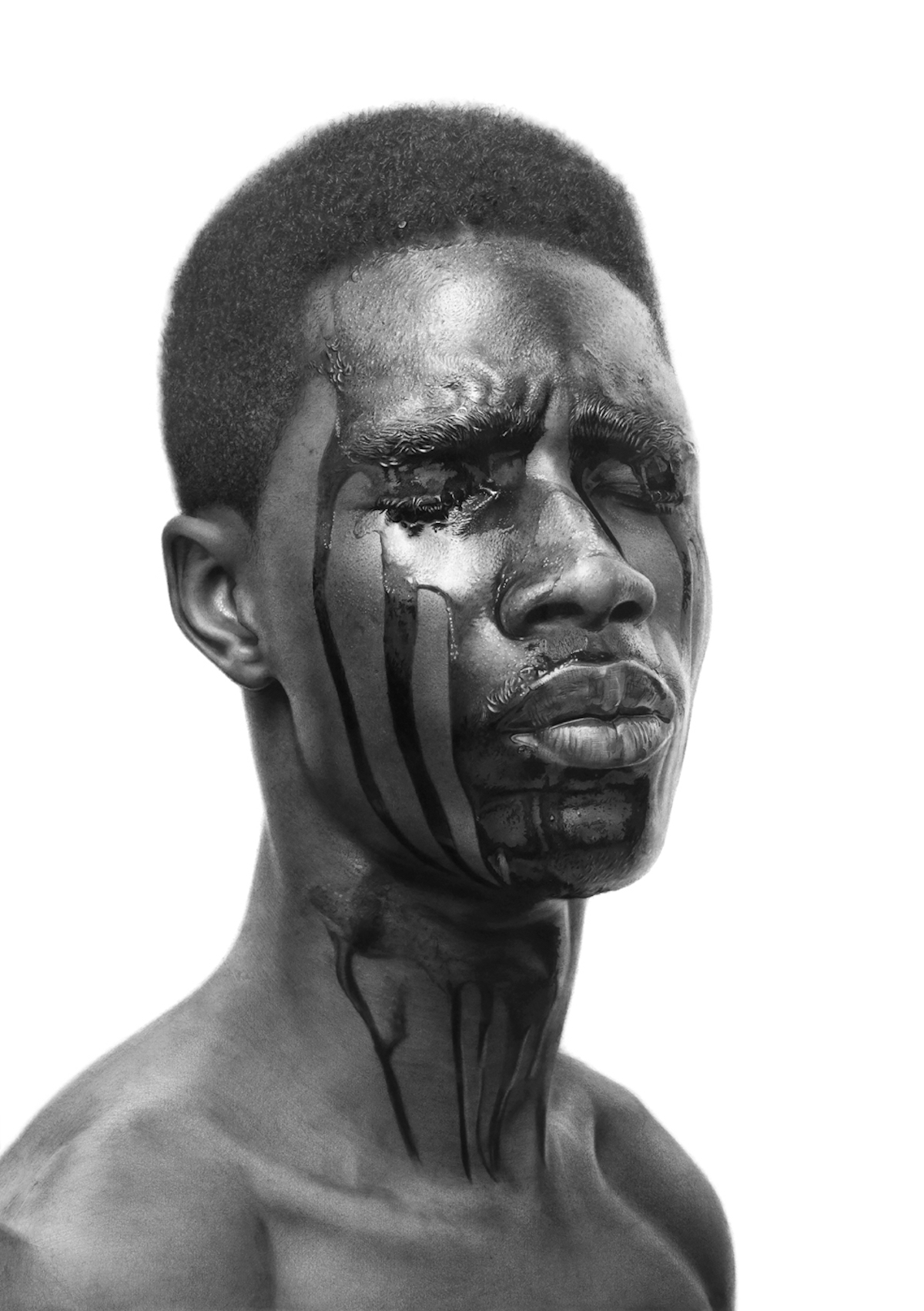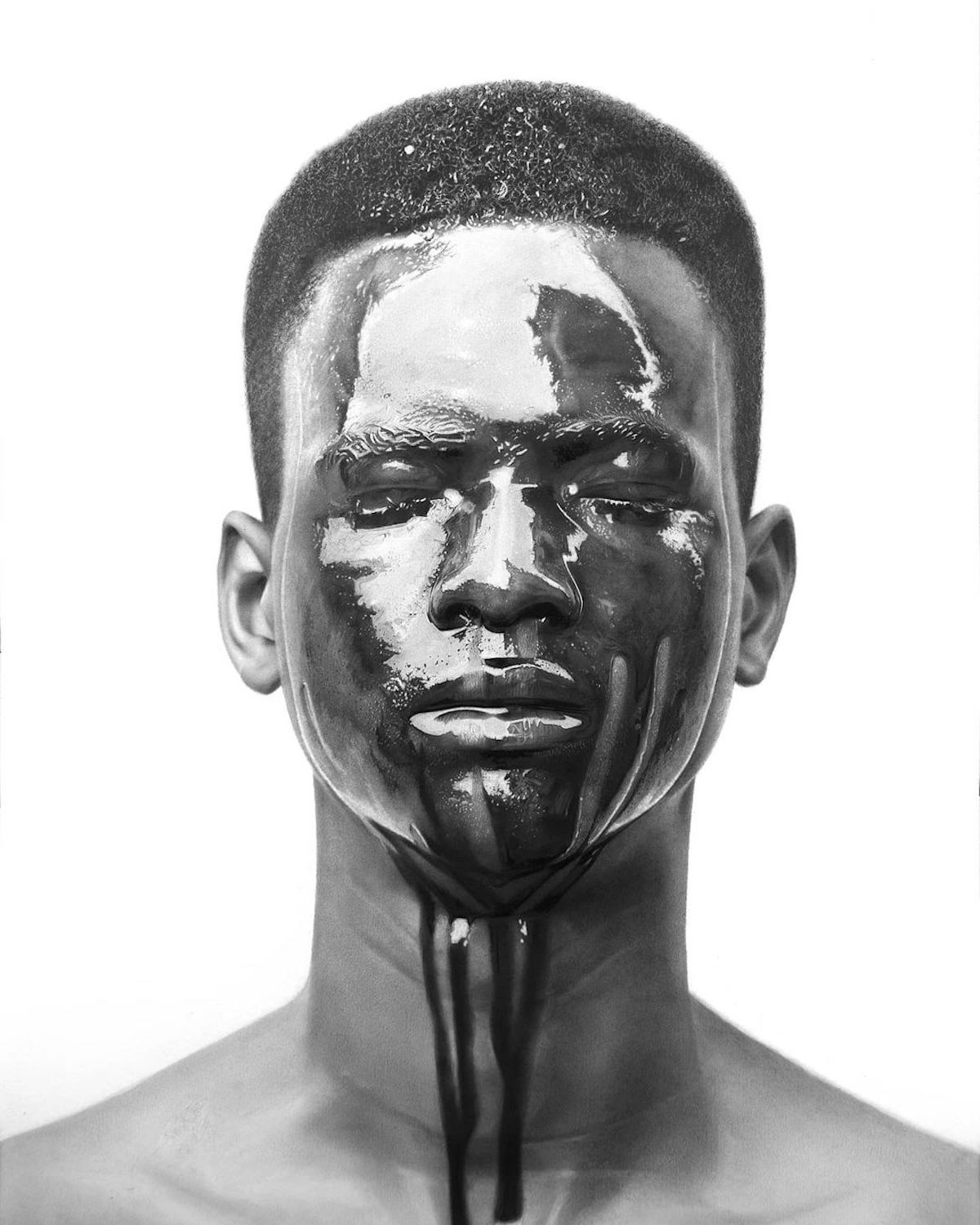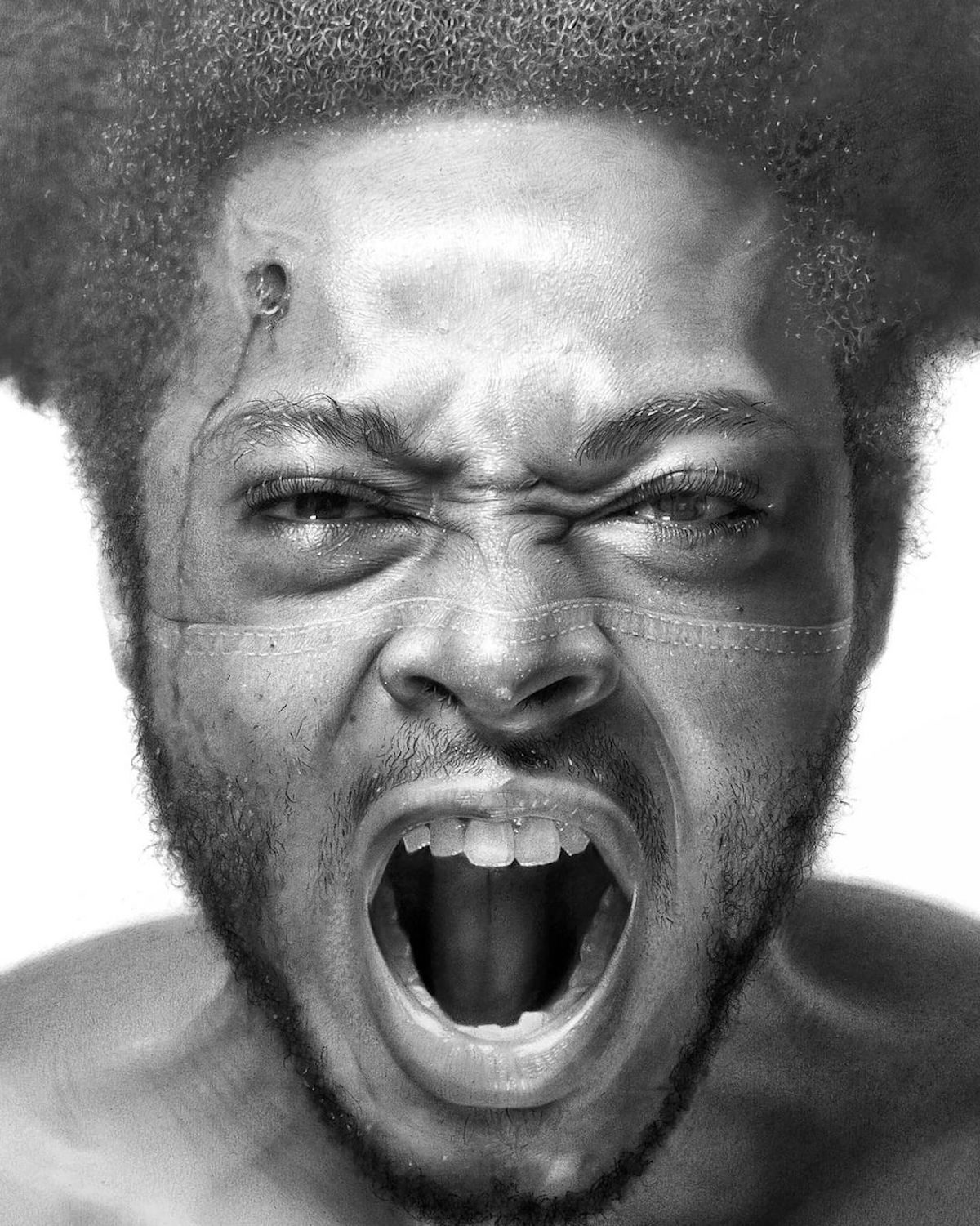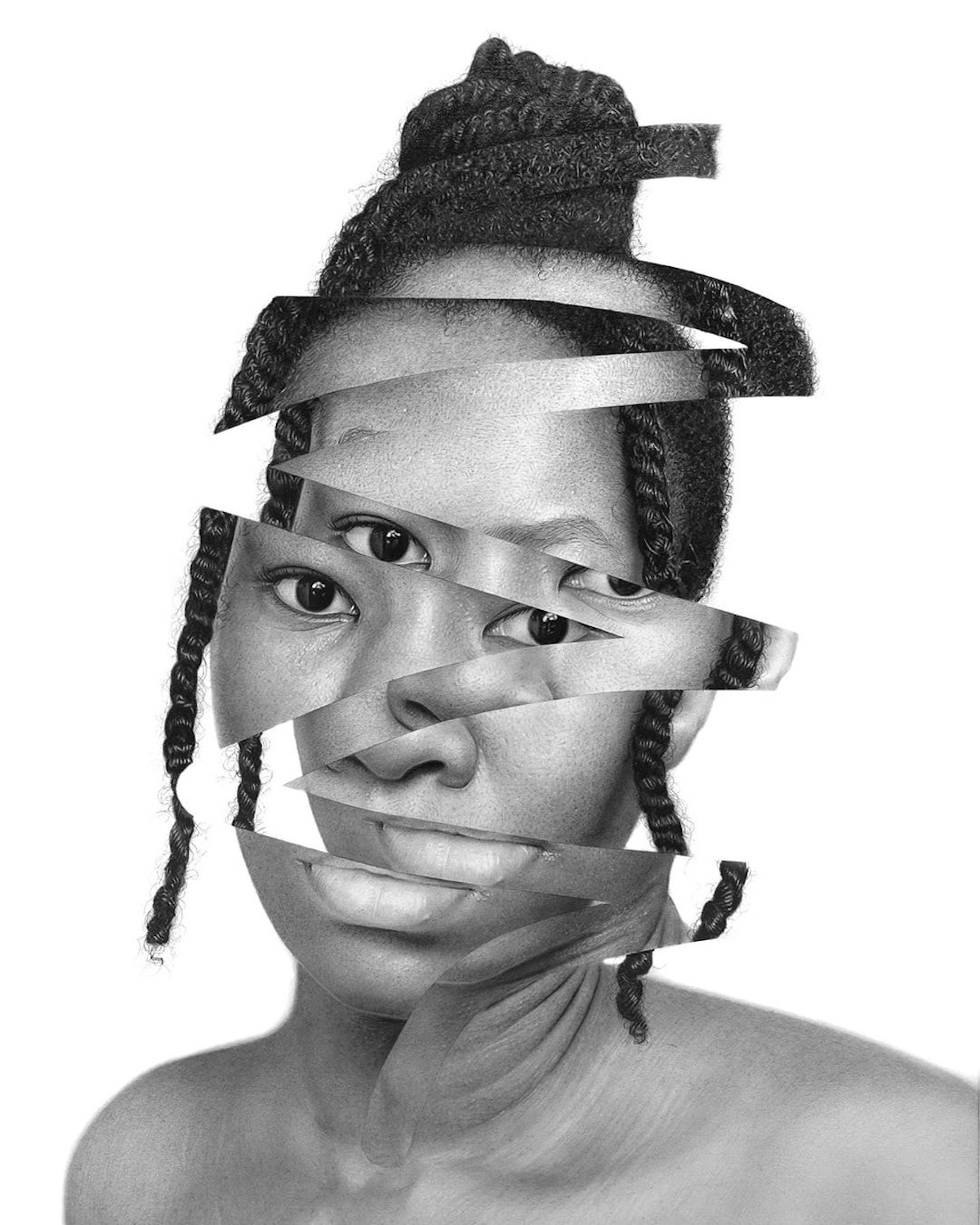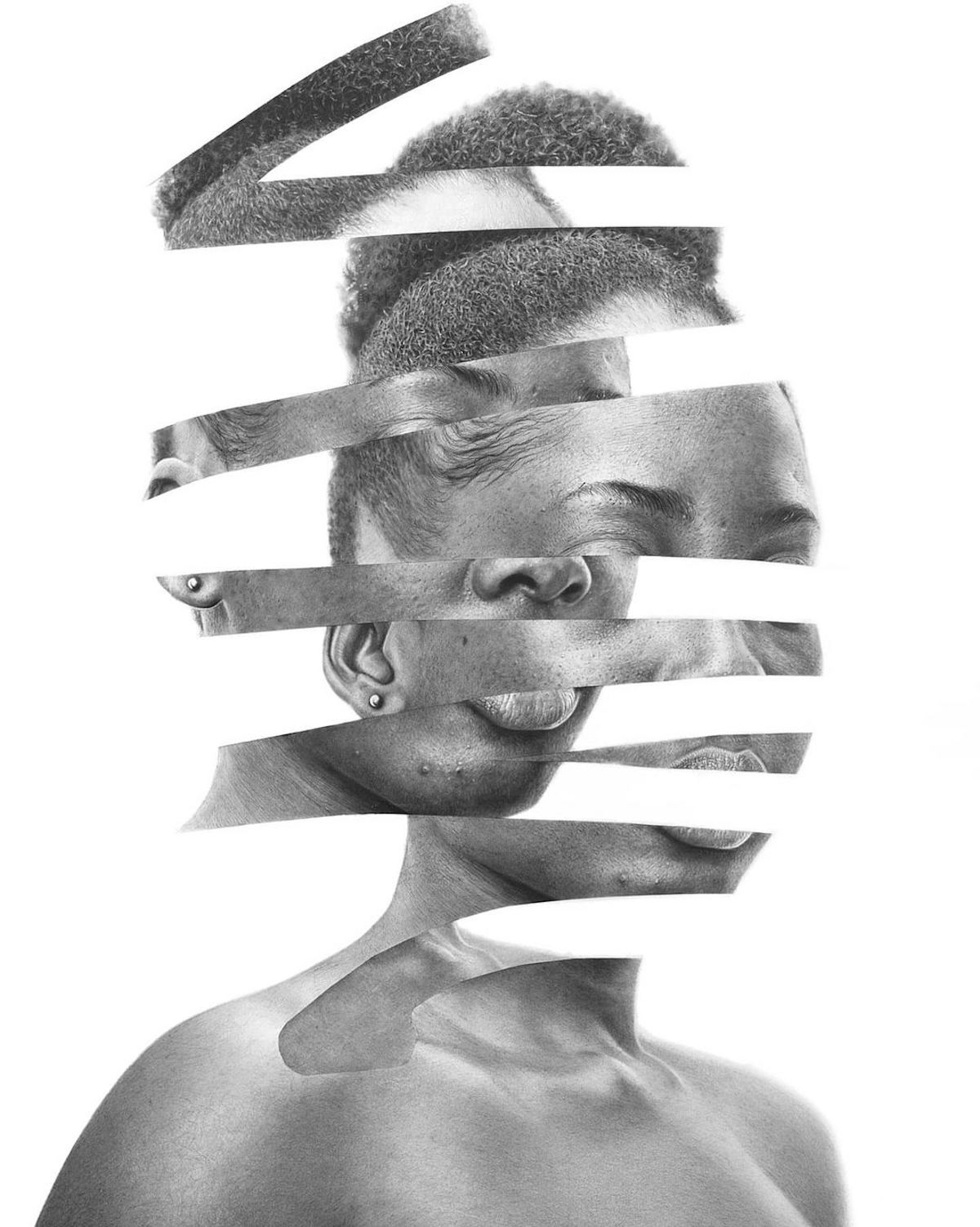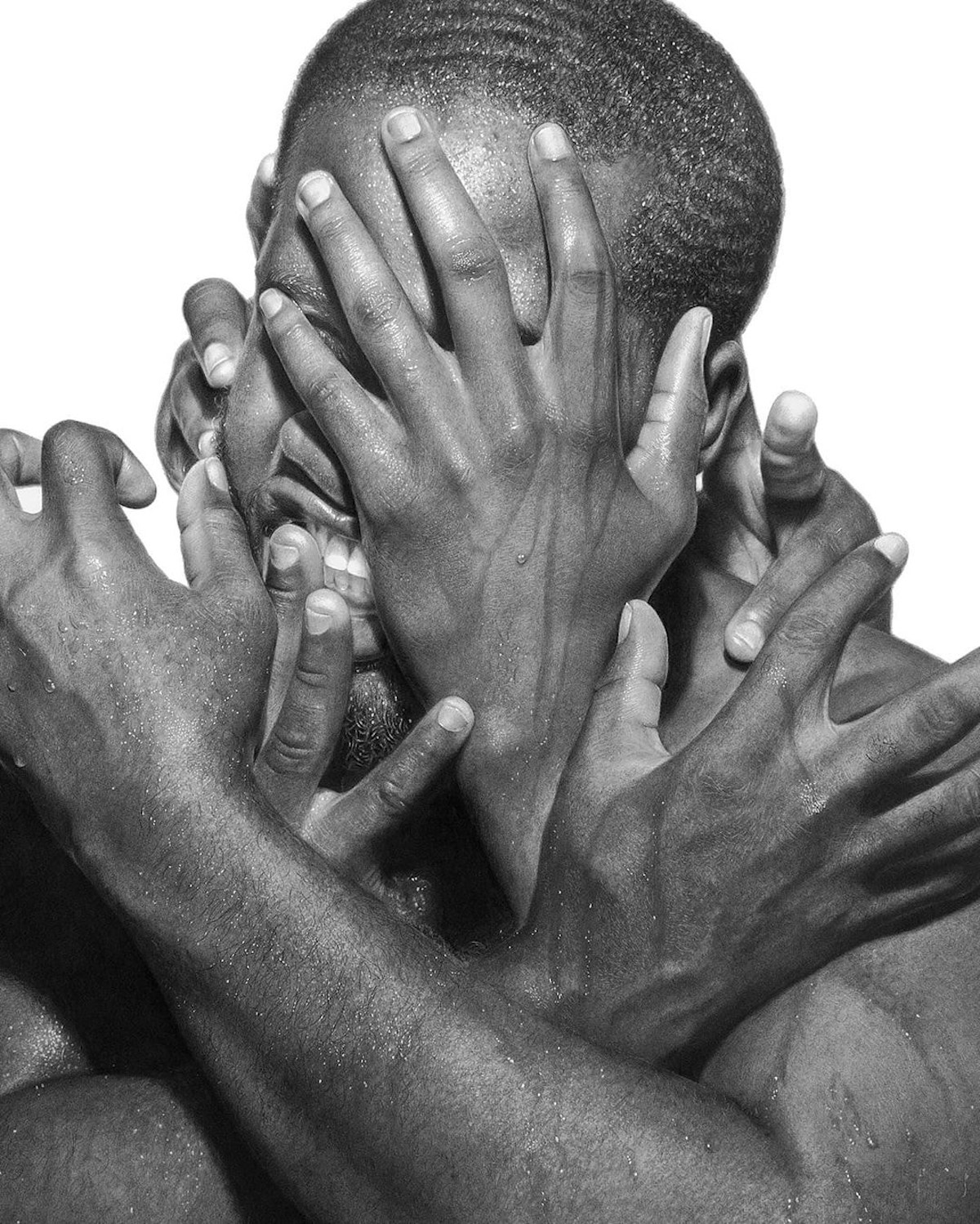
Artist Arinze Stanley achieves his incredible hyperrealistic artwork by exercising what he refers to as the “three P’s.” The principles that Stanley works by are patience, practice, and persistence. His dedication—and his continual strive towards perfection—has helped the self-taught artist to develop portraits of Black people that appear in often surrealistic ways. Crafted using pencil, his subjects look like photographs as liquid drips down their faces, bullet holes puncture their foreheads, and their faces are otherwise obscured with woven masks. The striking series of thought-provoking images guide the viewers “into what is almost a psychedelic and uncertain experience of being Black in the 21st century.”
Stanley has been drawing for as long as he can remember. “I drew literally everything as a child, from portraits of my family and friends to trees and landscapes,” he tells My Modern Met. “Every drawing seemed like a competition for me. I drew mostly in the back of my school textbooks and notebooks.” Always passionate about art, his compositions are a testament to the amount of work required to build skills like his. “I never had formal art training, so a lot of how I draw now results from all those years of trying hard.”
Beyond the desire to get better, Stanley looks at his abilities as a gift. “Over the years, I have found that I was blessed with this beautiful gift for a reason, and I keep discovering new purposes in my art,” he explains. For his latest pieces, this includes using them to “speak for those who can’t speak for themselves” and as a form of social and political activism. “This has become a way of life for me, using my art as an instrument of communication and change. There has never been a better time to speak up against the sad reality of today.”
A selection of Stanley’s work recently appeared in a solo show called Paranormal Portraits at the Corey Helford Gallery in downtown Los Angeles. With the exhibition completed on November 7, 2020, Stanley is now looking towards the future. “I’m pushing my boundaries to create larger and more intriguing masterpieces, educational artworks that will inform the future about the mistakes of the past.”
Artist Arinze Stanley creates hyperrealistic pencil drawings that guide viewers “into what is almost a psychedelic and uncertain experience of being Black in the 21st century.”

